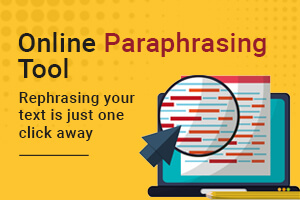
What is Artificial Intelligence and Augmented Reality?
Large businesses now frequently utilise learning management systems and online courses. Additionally, small and medium-sized businesses are increasingly choosing augmented reality based courses because they understand their potential and how much the training industry is expanding and changing at the same time with the details about GCSE Exams 2023
Employee engagement is greatly increased through AI and VR technology training, which also reduces the time needed for learning new skills and knowledge. The development of instructional AR materials which is a modified version of AI in AR/VR, might be helped by a professional paper writing service.
What is Augmented Reality?
Augmented reality (AR), which uses cutting-edge technology, improves the actual world by overlaying digital features such as 3D models, animations, text, movie, and offering benefits of augmented reality in education in real time.
It has opened up a variety of alternatives across several industries, ushering in an era of limitless imagination and innovation. Hence to some extent making it easier for students to pay someone to do my assignment online irrespective of their geographical location.
The unique and immersive learning experience that results from this seamless integration captures learners' interest and encourages participation and undoubtedly be the future of augmented reality in education.
Current status of Artificial Intelligence and Augmented Reality
This game-changing technology has opened up a wide range of opportunities across numerous industries, ushering in an age of unrestricted imagination and creativity. Education is one of the many industries that have embraced AR's promise and benefited greatly from this immersive technology. Artificial intelligence and augmented reality in education.
Therefore, it can be imagined that in not so far future virtual reality in education will be prevailing significantly.
Augmented Reality and Artificial Intelligence Projects in Education
It is not that augmented reality and artificial intelligence are in competition, there would be no articles demonstrating something like what is AR vs VR. However, there are certain differences and similarities that suggest how the two are different which are explained below in detail.
How is Artificial Intelligence Used in Education?
AI improves individualised learning programmes and courses for students, encourages tutoring by helping students hone their skills and strengthen their weak areas with augmented reality in education and training, which provides prompt communication between teachers and students, and improves universal 24/7 learning access.
Augmented Intelligence can be used by educators to automate tasks including administrative labour, learning pattern analysis, paper grading, answering general questions, and more.
Following are the applications of AI in education which would explain the main difference between augmented reality and artificial intelligence along with the importance of AI in education. (IndustryTrends, 2022).
Designing Courses
The development of educational programmes through a central department takes a lot of time and money. The production of courses is simplified with the use of AI, which also speeds up the process and lowers expenses.
Providing Individualized Instruction
The tendency of personalization in education is substantial. A personalised learning approach is provided to pupils by AI based on their own interests and experiences. To maximise learning, AI may adapt to each student's proficiency level, intended outcomes, and rate of learning.
Facilitating Global Access
The barriers between schools and conventional grade levels are broken down by AI. Students from all over the world, including those who speak different languages or have visual or auditory impairments, can now access courses through AI tools.
How is Augmented Reality Used in Education?
An interactive technology called augmented reality superimposes digital elements on the physical world. In your daily life, you've certainly encountered examples of augmented reality, such as virtually putting on clothes and accessories or using interactive features in online games, but how does it function? What does make virtual reality in higher education beneficial for education?
Aside from boosting engagement and giving students access to limitless resources, augmented reality in education has many other amazing advantages.
- Increased Classroom Participation: augmented reality in education research paper is interesting. According to studies, using augmented reality to learn improves student involvement and attention.
- Improved Communication and Interaction: Students can explore, create, and work together with their peers using augmented reality. Students can interact by seeing augmented reality resources together in real time or even exploring and debating 3D models and environments made by their peers.
- Multisensory educational opportunities: Augmented reality is equal to hands-on learning! Through active participation in every lecture, augmented reality allows for greater student engagement. By involving pupils in the subject matter and enhancing sensory development, this multi-sensory method helps teaching.
Pros and Cons of Augmented Reality in Education
AR can have a big impact on classroom settings:
Advantages of Augmented Reality
- Engagement and interest of students: When given the chance to participate in the creation of instructional content, students' interest soars. They can contribute to the curriculum, build virtual worlds, and discover new hobbies thanks to AR technologies.
- Learning environment: Classes that use AR can encourage participation from the students. An interactive learning environment offers chances to use practical teaching methods that can improve the educational process and encourage students to practise and learn new abilities.
- Content understanding: Teachers who are hesitant to employ augmented reality in the classroom frequently express concern about the lack of high-quality information that is geared towards instruction rather than enjoyment.
However, with the use of current AR technologies, teachers may independently produce immersive learning environments to help assure their students understand curriculum content.
Disadvantages of Augmented Reality
The drawbacks of artificial intelligence in education Artificial intelligence has been around for a while and is starting to take over more and more aspects of our lives.
While there are many benefits to adopting AI as a tool in education, some of them include raising student engagement through gamification or boosting grading precision by employing machine learning algorithms to automatically score essays.
Reduced Human Interaction
Despite various drawbacks, artificial intelligence can be a useful educational tool. One drawback is that because they don't interact with real people during class, pupils are unable to practise and gain social skills.
Lack of employment for teachers
Teachers losing their jobs is one of the drawbacks of employing AI in education. There is no longer a need for human instructors to lead children during sessions or even grade homework because these programmes enable students study on their own.
Financial Difficulties
Many financial issues are present with artificial intelligence in education. Well-educated scientists who have spent years honing their trade are creating artificial intelligence, and they want funding to both carry out more research and pay the people who collaborate with them on their projects.
Conclusion
A disruptive force in education, augmented reality provides a dynamic and interactive learning environment that goes beyond conventional teaching techniques.
AR improves engagement and understanding by incorporating virtual components into the actual world, while also enabling kids to acquire crucial skills for the future.
Using augmented reality in the classroom has a variety of advantages over conventional teaching techniques. Due to AR's immersive and interactive features, learning environments that catch students' interest and pique their curiosity are produced, which improves engagement and memory retention.
Additionally, the versatility of AR offers personalised learning experiences, catering to various learning requirements and styles, guaranteeing that every student can succeed in their own particular way.
Beyond its effects on education, AR promotes inclusion by dismantling obstacles and ensuring that everyone has access to high-quality education. It fosters a spirit of equality and teamwork among students by providing a level playing field where students with various backgrounds and abilities can succeed.



